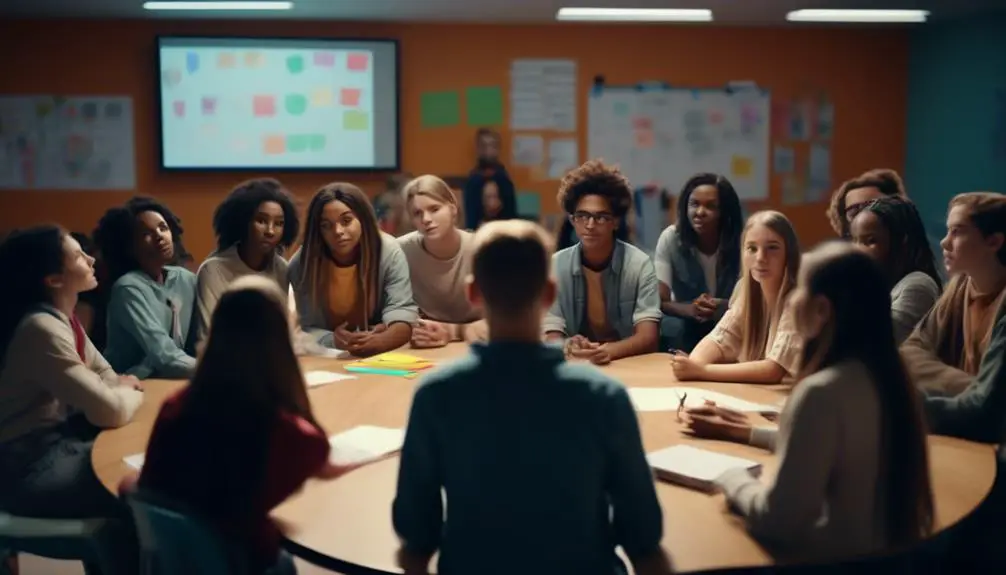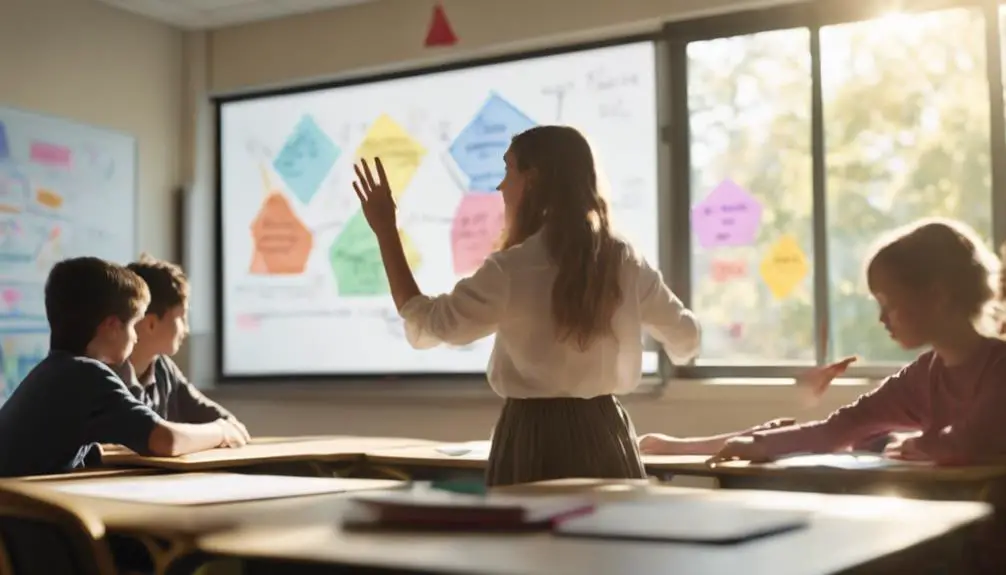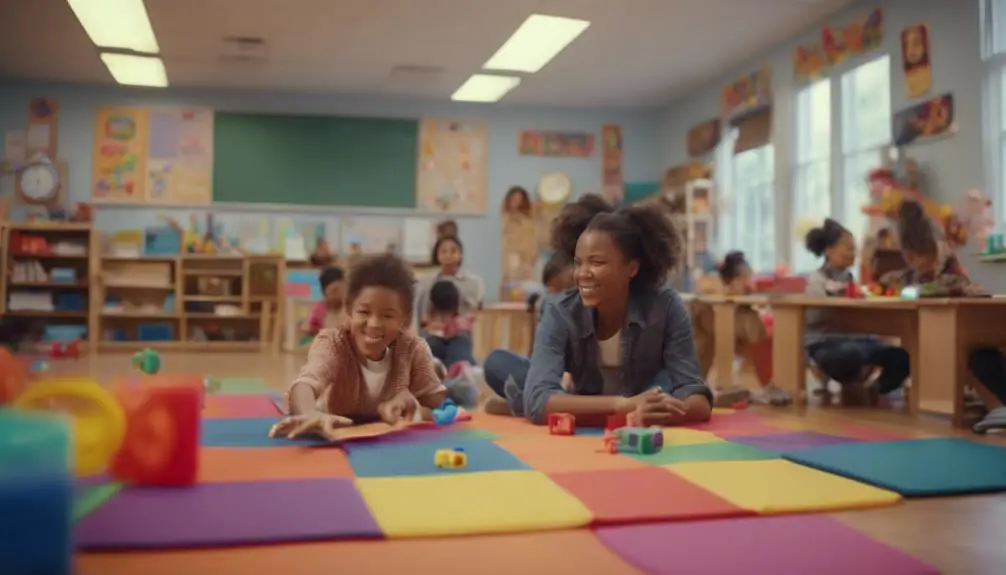Classroom meetings are a vital component of a well-functioning classroom. They serve as the glue that brings the day together, fostering a tight-knit community within the four walls of the classroom.
But what does it take to organize an effective morning class meeting? How can we establish clear expectations and create a shared agenda?
In this article, we will look into these questions and uncover the secrets behind successful classroom meetings.
What are class meetings?
Class meetings are regular gatherings where students and teachers come together to discuss important matters and make decisions as a classroom community. These meetings have many benefits for both students and teachers. They provide a platform for students to express their thoughts and opinions, fostering a sense of belonging and ownership within the classroom. By involving students in decision-making processes, class meetings promote responsibility and accountability among students.
Implementing class meetings can be done in various ways. One effective strategy is to establish a consistent meeting time, such as every Monday morning or Friday afternoon. This ensures that meetings are held regularly. Another strategy is to create a safe and respectful environment where everyone feels comfortable sharing their thoughts and ideas. Teachers can use techniques like a talking stick or a class meeting agenda to ensure that everyone has a chance to speak and that discussions stay focused.
The importance of class meetings can’t be overstated. They provide an opportunity for students to develop important social and emotional skills, such as active listening, empathy, and problem-solving. Class meetings also promote a positive classroom climate and enhance student engagement and motivation.
Here are a few examples of topics that can be discussed during class meetings: classroom rules and expectations, conflict resolution, goal-setting, and classroom community-building activities. By incorporating class meetings into the classroom routine, teachers can create a sense of belonging and empower students to become active participants in their own learning journey.
A step-by-step guide to organizing an effective morning class meeting
Today, I’ll share with you a step-by-step guide on how to organize a successful morning class meeting.
We’ll begin by warmly greeting each other and setting clear expectations for the purpose and format of the meeting. Together, we’ll create an agenda that we can all contribute to.
It’s important to actively listen to one another and show respect for everyone’s ideas. We can even incorporate a fun show-and-tell session to make the meeting more engaging.
Let’s work together to build a positive and inclusive classroom community through our morning class meetings.
Start with a Morning Greeting
In our morning class meeting, I make it a point to warmly greet each student individually. This simple act sets a positive tone for the day and helps to foster a sense of community in our classroom. By taking the time to acknowledge each student, I’m not only building relationships but also creating a welcoming environment for learning.
Through these morning greetings, we practice our communication skills and learn to appreciate each other’s presence. This is a time for us to share our morning routines, exchange smiles, and offer words of encouragement. It may seem like a small gesture, but it goes a long way in creating a safe and inclusive space where every student feels valued and part of our classroom community.
Set Clear Expectations
To ensure a productive and meaningful morning class meeting, it’s important to clearly explain its purpose and format to the students.
Rather than using complicated language, I’ll use clear and straightforward language to simplify the explanation.
The morning class meeting is a time for students to share important information, ask questions, and connect with their peers.
By participating in this meeting, students can engage with one another and effectively communicate.
It also allows them to build a sense of community and belonging within the classroom.
With these clear expectations in place, the morning class meeting will be a valuable and beneficial experience for everyone involved.
Create a Shared Agenda
To create a collaborative and effective morning class meeting, I encourage my students to contribute topics they would like to discuss or issues they would like to address by creating a shared agenda. Allowing them to have a say in the meeting topics, creates a sense of ownership and belonging within the classroom community. To facilitate this process, I use a collaborative agenda where students can contribute their ideas and suggestions. Here is an example of what a collaborative agenda might look like:
| Morning Meeting Topics | Discussion Ideas | Addressing Issues |
|---|---|---|
| Upcoming events | Favorite books | Bullying |
| Class projects | Hobbies | Homework difficulties |
| Community service ideas | Current events | Classroom rules |
| Student recognition | Friendship tips | Communication problems |
| Classroom improvements | Fun classroom games | Time management struggles |
Practice Active Listening
To have a productive and engaging morning class meeting, I teach my students the importance of active listening. I emphasize the need for maintaining eye contact, nodding in agreement, and asking questions when necessary. Active listening is crucial for effective communication and creates a respectful atmosphere where everyone feels heard and valued. By practicing active listening, students develop critical thinking skills and gain a better understanding of the topics discussed.
Here are three techniques for effective communication through active listening:
- Maintain eye contact: Students show their attention and interest by looking at the speaker, creating a sense of connection and belonging.
- Nod in agreement: Nonverbal cues like nodding demonstrate understanding and support, encouraging the speaker to continue sharing their thoughts.
- Ask questions: By asking questions, students can clarify information, deepen their understanding, and contribute to meaningful discussions.
Engaging in active listening not only benefits individuals but also promotes a positive and inclusive classroom environment.
Hold a Show and Tell Session
In our morning class meeting, I set aside time for students to participate in a show-and-tell session. This gives them the chance to share something that’s important or interesting to them, such as a special object, a piece of artwork, or a book they’ve recently read.
This activity allows students to express themselves and helps to create a sense of belonging within the classroom community. It’s a great opportunity for them to showcase their creativity, share their favorite hobbies, and recommend books to their peers.
During the Show and Tell session, students engage with each other by listening attentively to personal stories and asking questions. This activity fosters a supportive environment where students feel valued and respected for their unique interests and experiences.
Through participating in Show and Tell, students learn from one another, build connections, and strengthen their sense of belonging in the classroom.
Recognize Achievements
Take a moment to acknowledge and celebrate student achievements. It could be academic accomplishments, acts of kindness, or improvements in behavior. This fosters a positive classroom environment and encourages your students to continue to strive for success.
To foster a positive classroom environment and encourage continued success, there are several ways we can acknowledge and celebrate student achievements.
Recognize Student Accomplishments:
When a student achieves something outstanding, it’s important to acknowledge their hard work and dedication. Whether they excel on a test, write an exceptional essay, or deliver a successful presentation, publicly celebrate their achievement. This not only boosts their confidence but also inspires other students to strive for similar success.
Cultivate Positivity:
Creating a positive classroom environment is crucial for student growth. By acknowledging accomplishments, we create an atmosphere of support and encouragement. This positivity helps students develop a growth mindset and motivates them to continue working hard.
Celebrate All Achievements:
It’s essential to celebrate all achievements, big or small. Whether it’s acts of kindness, improvements in behavior, or academic accomplishments, recognize and appreciate their efforts equally. By celebrating these achievements, we show students that their hard work is valued and appreciated, reinforcing their drive for success.
Discuss Important Announcements
During the morning meeting, we share important announcements to make sure all students are well-informed and avoid any confusion. Sharing announcements is a crucial part of effective communication strategies within the classroom. By discussing upcoming events, field trips, or changes in the schedule, we ensure clarity and keep students informed about what is happening in our class. This helps create a sense of belonging as everyone is aware of what to expect and can plan accordingly. To facilitate this process, I recommend using a table to organize the information. Here’s an example:
| Date | Announcement | Importance |
|---|---|---|
| 10/15/2022 | We’re going on a field trip to the museum! | High |
| 10/20/2022 | Don’t forget the parent-teacher conference! | Medium |
| 10/25/2022 | The book fair is coming up! | Low |
| 11/01/2022 | There will be a schedule change. | High |
Problem-Solving
To encourage problem-solving skills and empower students to take ownership of their learning environment, I urge them to bring up any issues or concerns during our morning class meeting. This creates a safe space where they can freely express themselves and work collaboratively to find practical solutions.
Here are three activities that can help students address their concerns and take charge of their learning environment:
1) Brainstorming sessions: Students can openly share their concerns and ideas, and collectively develop strategies to overcome challenges or enhance the learning environment.
2) Group discussions: Students can form small groups to discuss specific concerns and brainstorm potential solutions. This promotes collaboration and allows everyone to contribute their ideas.
3) Action planning: Once solutions are identified, students can create action plans to implement these solutions and track their progress over time. This empowers them to take ownership of their learning environment and witness the impact of their efforts.
Goal Setting
In our morning class meeting, I help students review our class goals and set their own personal goals. This helps them have a clear sense of purpose and motivation.
We discuss their progress in academics, social skills, and behavior, and they determine areas they want to improve on. By setting specific objectives, students have something to strive for and a clear path to follow. It’s important for them to feel a sense of personal growth and understand that their goals are important.
As they share their goals with the class, they also create a supportive and encouraging environment. This process promotes a sense of belonging and encourages collaboration among students.
Ultimately, goal setting in our class meetings serves as a powerful tool for enhancing motivation and purpose in their learning journey.
Engage in Morning Reflections
During our morning class meeting, I guide students through a reflection exercise where they think about their accomplishments and challenges from the previous day. This reflection is an important part of our morning routine as it allows students to express gratitude for their achievements and identify areas they can improve upon.
There are three key components to our morning reflections that promote a growth mindset and a sense of belonging:
- Gratitude Practice: We start the day by expressing gratitude, which helps students develop a positive mindset and appreciate the opportunities they have. By sharing what they’re grateful for, it creates a sense of community and empathy among the students.
- Identifying Challenges: We also discuss the challenges students faced the previous day. This helps them see obstacles as opportunities for growth and develop resilience and perseverance.
- Seeking Student Feedback: I encourage students to provide feedback on our classroom environment and teaching methods. This empowers them to take ownership of their learning and fosters a sense of belonging and collaboration.
Incorporate Mindfulness
Incorporating mindfulness activities into the morning meeting can help students start the day with a calm and focused mindset. This can be done through simple and clear practices such as deep breathing exercises, guided visualizations, and gentle stretches.
These activities offer several benefits for students. Deep breathing exercises can help them relax and reduce stress, allowing them to approach the day with a clear mind. Guided visualizations can help students visualize success and set positive intentions for the day ahead. Gentle stretches can also help release tension and boost energy levels.
Encourage Peer Feedback
Encourage a culture of kindness and respect by promoting constructive feedback and support during the morning meeting. This will foster collaboration and growth among classmates. Here are three ways to encourage peer feedback and create a kind classroom environment:
- Compliments: Encourage students to share positive feedback with their peers. This boosts self-esteem and creates a positive atmosphere where everyone feels valued and appreciated.
- Suggestions for Improvement: Encourage students to provide helpful suggestions aimed at helping their classmates improve their work. By focusing on constructive feedback, students can learn from each other and grow together.
- Peer Support: Foster a sense of community by encouraging students to support their peers. This can be done through offering assistance, sharing resources, or simply being a friendly and supportive presence in the classroom.
End on a Positive Note
Concluding the morning meeting on a positive note is crucial for setting the tone of the day ahead.
It’s important to recap the main points discussed during the meeting in a clear and straightforward manner, ensuring that everyone is on the same page. This helps create a sense of unity and understanding within the classroom.
Expressing appreciation for everyone’s contributions fosters a culture of belonging and respect, letting students know that their ideas and input are valued. This encourages them to actively participate in future discussions.
Lastly, wishing students a productive day ahead instills a sense of purpose and motivation. By starting the day positively, we create an environment where students can thrive and reach their full potential.
What are the 4 components of classroom meetings?
Classroom meetings consist of four essential components: greeting, sharing, activity, and message. These components are vital for creating a positive and inclusive environment where students can connect, express their thoughts and emotions, participate in meaningful activities, and receive important information from their teacher. Let’s take a closer look at each of these components and understand how they contribute to a productive classroom meeting.
Greeting
A classroom meeting consists of four components that make up the greeting. The greeting is an important part of the morning routine as it sets the tone for the rest of the day. It plays a vital role in building community, fostering connections, and creating a welcoming environment where students feel valued and included.
Here are three key elements that contribute to a positive greeting experience:
- Eye contact and a warm smile: When I greet each student individually with eye contact and a genuine smile, it shows that I see and value them.
- Personalized greetings: Addressing students by name and acknowledging something positive about them helps create a sense of connection and a positive atmosphere.
- Engaging in small talk: Taking a few moments to have casual conversations with students allows them to share and feel heard, encouraging positive interactions and a sense of belonging.
Sharing
The sharing component of effective classroom meetings consists of four essential elements that promote open communication and a sense of community.
Sharing ideas is a key aspect of this component, as it allows students to express their thoughts and opinions freely. It also encourages them to develop their communication skills by actively participating in group discussions. By sharing their ideas, students can build relationships with their peers and foster a supportive and inclusive environment.
Additionally, sharing promotes creativity as students learn from each other’s perspectives and experiences. Through this component, students not only learn to communicate effectively but also develop empathy and respect for one another.
The sharing component plays a crucial role in creating a classroom culture that values collaboration and encourages the growth of every student.
Activity
Classroom meetings include activities that engage students and promote active learning. Here are three activity ideas for classroom meetings that can help students feel a sense of belonging:
- Icebreakers: Start the meeting with fun activities that help students get to know each other better. For example, you can play games like Two Truths and a Lie or Human Bingo.
- Team building: Engage students in collaborative activities that require teamwork and cooperation. This can involve problem-solving tasks or group challenges that encourage communication and trust among classmates.
- Reflection exercises: Incorporate activities that allow students to reflect on their learning experiences and share their thoughts and insights. This can include journaling, group discussions, or even artistic expressions.
Message
The four components of a classroom meeting encompass communication, collaboration, reflection, and problem-solving.
When it comes to the message, it’s important to develop strong communication skills and promote active listening within the classroom. By actively listening to each other, students can better understand and empathize with their peers. This fosters a sense of belonging and encourages open and honest communication.
In addition, problem-solving and goal-setting are essential aspects of the message component. During classroom meetings, students learn to work together to identify and address challenges, set goals, and find solutions. This not only enhances their problem-solving skills but also promotes a supportive and inclusive classroom environment where everyone feels valued and heard.
Conclusion
Classroom meetings are a valuable tool for creating a positive and inclusive learning environment. By following the step-by-step guide provided, teachers can organize effective morning meetings that engage students and support their social-emotional development.
The four components of classroom meetings – greeting, sharing, group activity, and news and announcements – work together to build a strong and supportive classroom community.
Let’s embrace the power of class meetings and watch our students thrive!



















